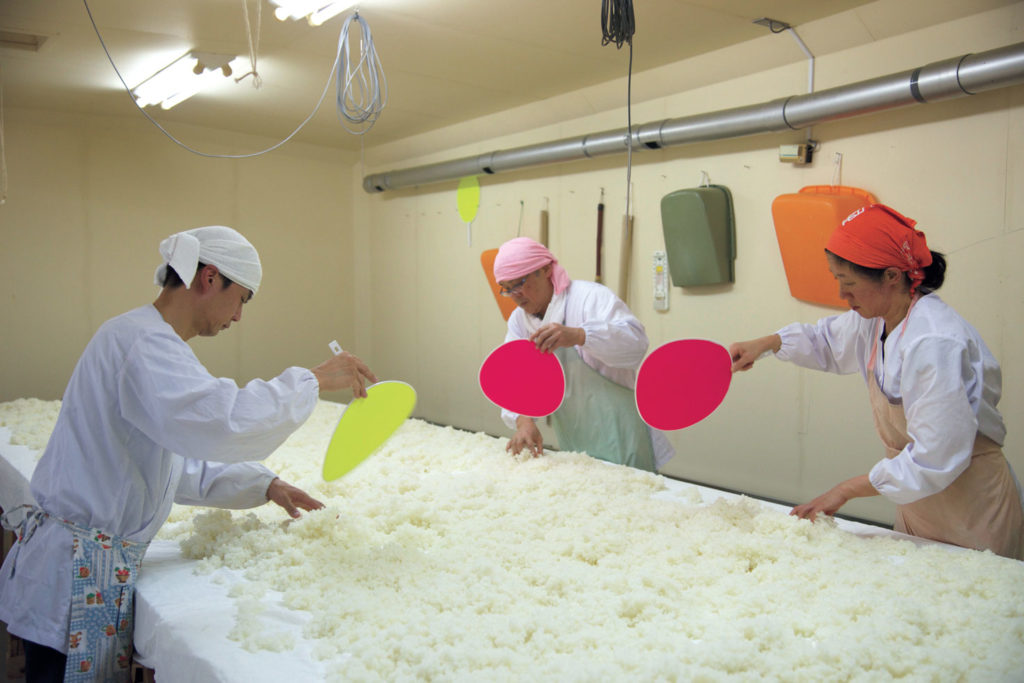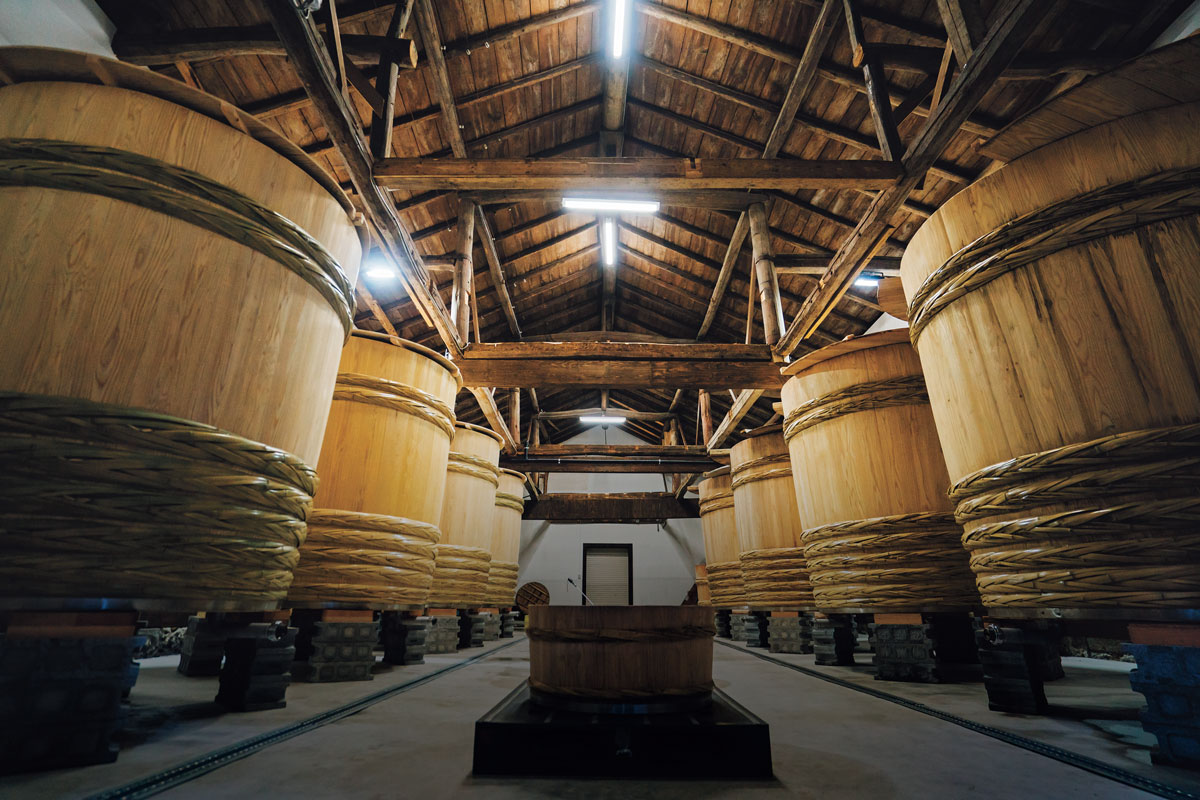Sake is one of the world’s oldest alcoholic beverages—it’s mentioned in texts dating to the 3rd century CE—and its formulation is bound largely by tradition. That process is closer to beer-brewing than winemaking, but a new generation of sake brewers, or sakaguras, is experimenting with vinification-inspired techniques to make thoroughly modern brews. We meet three of them.
Masumi
Last year, Naotaka Miyasaka, the president of this 358-year-old brewery in Nagano Prefecture, released a sparkling sake called Origarami—his take on the fizzy pétillant naturels from France’s natural winemakers. (This isn’t Masumi’s first brush with fermentation fame: Yeast Number 7, a strain now used by more than 60 percent of Japan’s sake breweries, was discovered at the company’s facility.) Try the effervescent Origarami at Masumi’s sleek tasting salon in the lakeside city of Suwa, then take a short walk to sample brews from one of the four other partners in the Suwa5Kura collective—a gang of like-minded kuras (breweries) that formed in 2008 and created a visitor tasting program in 2013.
masumi.co.jp
Senkin
Managing director Kazuki Usui trained as a sommelier and later taught wine classes at the Japanese Sommelier School in Tokyo, but he returned home to Tochigi Prefecture in 2004 to turn around his family’s struggling 214-year-old brewery. He applied his knowledge of wine to elevate Senkin’s classic offerings—using estate-grown rice and producing higher-acid sakes and he’s now pushing new styles forward by looking to the past. Following Edoperiod practices, the rice for his Kimoto Nature sake is barely polished (most of today’s premium sakes use heavily milled rice) and is fermented in wooden barrels using native yeasts. Sadly, the brewery is not open to the public, so you’ll have to put together a DIY tasting.
senkin.co.jp

Mioya Brewery
“Bring us some fresh wine, the freshest you’ve got,” says Steve Martin in The Jerk. “This year’s, no more of this old stuff.” In that spirit, most sake brewers release their bottles promptly. Mioya Brewery in Ishikawa Prefecture, however, takes a different tack, aging its creations anywhere from one to three years. President Miho Fujita left her job as a marketing executive at Hot Wheels in 2003 to help her father run the brewery, which he had purchased in 1979, and she now makes complex, higher-acid beverages that appeal to her wine-educated palate. While the small facility isn’t open to guests, sake fans can find her experimental brews at top Tokyo sake bars and izakayas such as Nihonshu Stand Moto, Kyobashi Moto, and Plat Stand Moto.
mioya-sake.com
Next Up: Sake Brewing Comes to America




